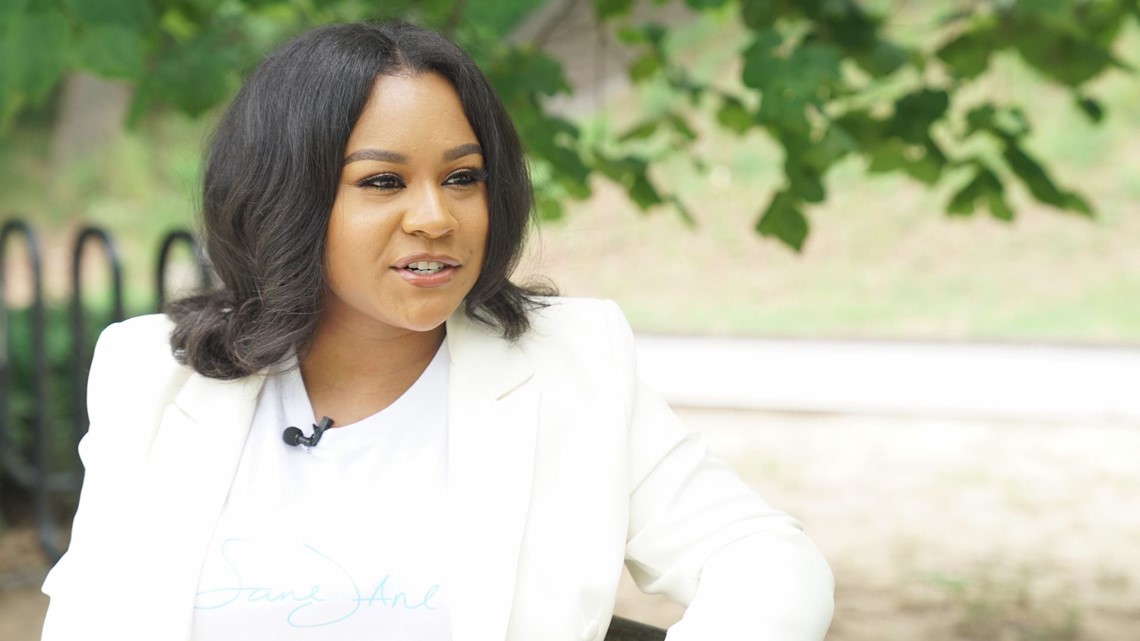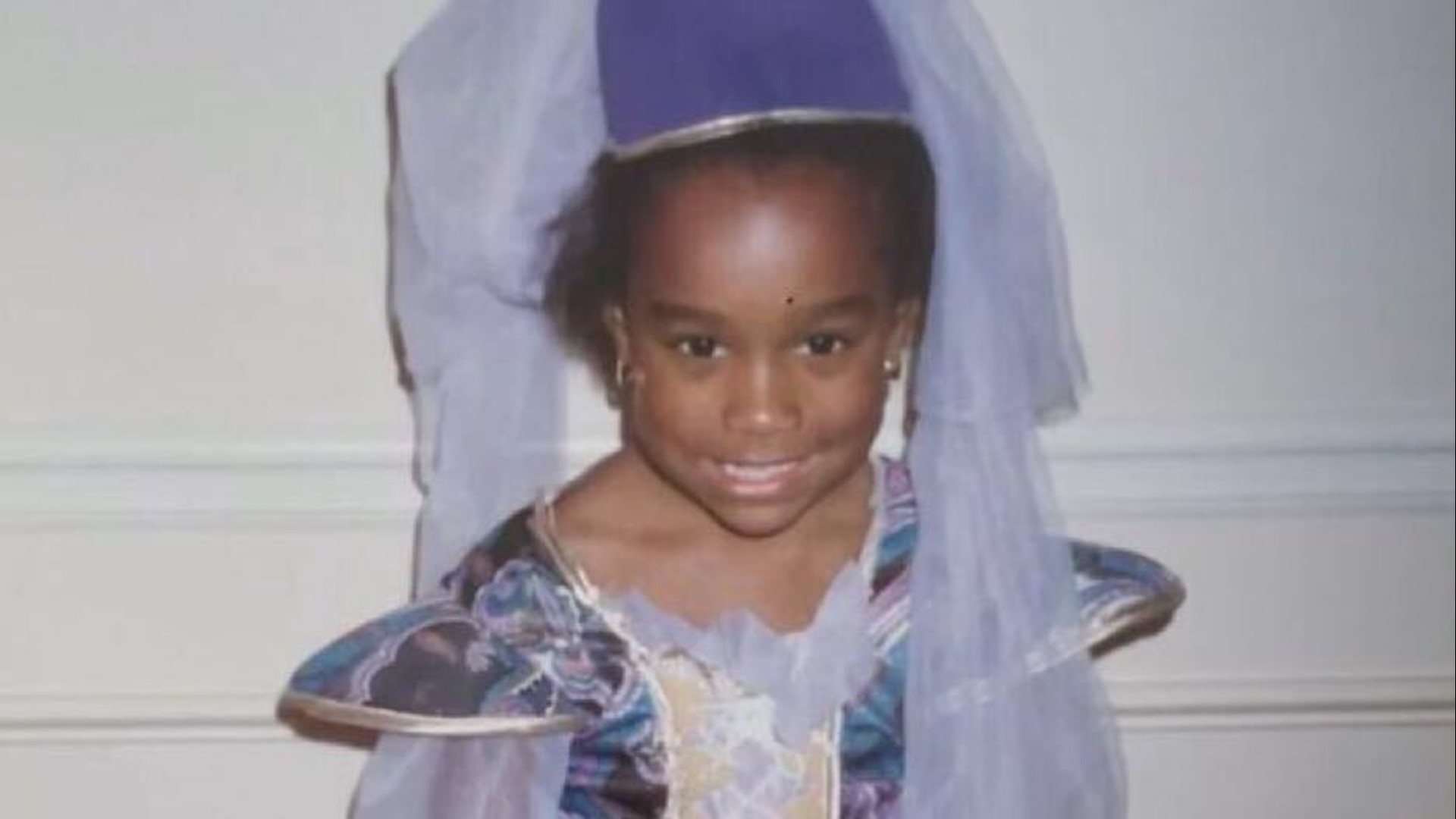She attempted suicide at 12 years old, but now she helps others cope with pain
Paige Gaines shares her purpose for helping others cope with their feelings. Three young people also give their perspective on how they deal with everyday life.

Editor's note: This story contains graphic descriptions of death by suicide involving children. If you or someone you know is struggling with thoughts of suicide, help is available. Call the National Suicide Prevention Line at 1-800-273-8255.
Data from the Centers for Disease Control and Prevention shows that at least 3,600 children under the age of 13 died by suicide in the last two decades.
Paige Gaines was almost one of them. She was just 12 years old when she attempted suicide for the first time.
In episode three of "A Different Cry," Gaines, as a two-time survivor, shares her purpose for helping others cope with their feelings. Children also explore reasons why they feel they aren't being heard.
Surviving
"I go back and look at pictures of myself and you can see it in my eyes," Paige Gaines said. "I was sitting there knowing that this was my moment, this was my time, and it was my time to go and I was very confident in that decision."
Gaines said she decided to take matters into her own hands after not feeling validated.
"I just found all this over the counter medication I just took pill after pill, and I went back into the bedroom, waited for something to happen and nothing happened. So I just lay down, closed my eyes, and then the following morning I woke up," she said.
That next morning, she said she felt angry and sad as she felt the burden of knowing she tried to end her life. She's one of tens of thousands of survivors of suicide trying to help children learn how to cope with their feelings. Gaines is the founder of "911 Sane Jane."
Gaines' goal is to decrease the lingering stigma in African American communities. Years ago, she wrote an article about her experiences and she said it went viral.
"And then from that moment forward, I just started educating myself and knowing that my story had to be told," Gaines said.


"I stayed true to my story, but I wanted the facts. I wanted the numbers. I wanted all of that. And I definitely recall looking at the statistics for Black men and Black youth and the suicide rates," she explained. "And I can visualize it to this day. It was heartbreaking and this was in 2015 and that was that moment where I was like, this is it. I don't I can't do anything else."
Gaines hopes to normalize the conversation about suicide and help educate others.
What young people are saying


While efforts to reduce suicide among white children are showing results, suicide attempts among Black children are rising fast, data shows.
"We know a lot about what works for white youth in terms of preventing suicide," said suicidologist and Bloomberg Fellow Janel Cubbage." And we just don't have that same evidence-base or literature around Black youth suicide."
Listening is the one thing that young people and experts said can help the most.
11Alive held a sit-down conversation with three young people to get their perspective on how they are dealing with the pressures of school and everyday life.
"By default, as a Black child you are seen as unruly," said 13-year-old London Connolly. "If you do one thing, it is magnified. You could be suspended. You could have the cops called on you."
"White kids' mental health will be put over Black kids," Connolly believes. "Everybody is not the same. Like as a Black child, I'm dealing with generational trauma. I'm dealing with racism as a Black woman. I'm dealing with sexism. I'm dealing with colorism from the Black community. Sometimes it's a lot on top of each other."
Carlene Williams, 9th grader, even shared how sometimes it's hard to find a place where students feel welcomed and accepted.
"I don’t belong in this crowd, I don’t belong in that crowd," Williams said. "If I act a certain way around white people, I’ll be labeled as ghetto. If I act a way around Black people, I’ll be labeled as white."
"I feel like race isn't communicated well in schools," said 9th grader Charlotte Harleston.
Their experiences lead them to feel that no one is listening.
"That's one of the things that's really big for me and for my friends: let me talk, let me explain it. Don't then say, ‘Well, no, because you have a great life’ and ‘no, because you're not failing your classes’ and ‘no, because you have all these great friends," Harleston said. "Let me finish. Let me tell you what I don't tell you when I come home from school.
"Let me tell you about the kids who keep bothering me. Let me tell you about the fact that I don't understand my math class, but somehow I'm still passing. Like, let me tell you all of these other things," she added. "Let me tell you what's going on with just me and how I'm wrestling with my identity. If I finish, then maybe you'll understand."
How to listen
"Kids are suffering in silence," Psychologist Alfiee Breland-Noble of the AAKOMA Project said. "So they go to what they know. They go to what they see...and what they see is maybe not living is a solution."
Research shows Black children, in particular those 13 or younger, had suicide death rates twice as high as their white peers. Experts believe the best way for parents help children is to take action and have conversations with them.
"Do not ask your kids how was your day. Instead, change the question. 'Tell me something good that happened to you today. Tell me something bad that happened to you today,'" Breland-Noble said. "And then what did you think about that thing that happened to you?”
Schools should also do their part.
"If a Black kid is acting out in class instead of the teacher saying maybe something's going on at home, maybe this is a mental health concern, they move towards punishing that behavior instead of giving the kid help," said Cubbage.
Black children are asking for mental health support catered to their needs. According to the Congressional Black Caucus (CBC) Emergency Task Force report titled “Ring the Alarm: The Crisis of Black Youth Suicide in America”, Black children and teens are less likely to receive care for depression – a major risk factor for suicide.
Gaines hopes that by sharing her story, it can help children and teens see that there's a light at the end of the tunnel and that there are resources available.
"We train police officers, we train doctors and things like that ...but if you train the teenager that's sitting next to the teenager that's suicidal, they can recognize those signs," she said. "So I believe it's really about educating that core group that are going through those challenges."


